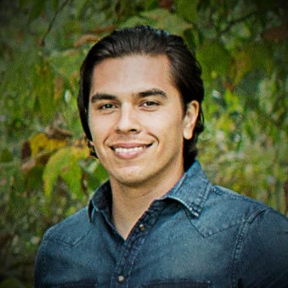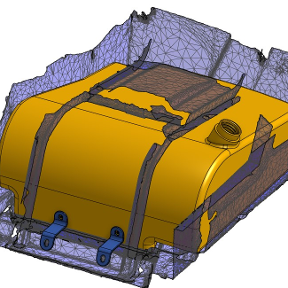Welcome to the Onshape forum! Ask questions and join in the discussions about everything Onshape.
First time visiting? Here are some places to start:- Looking for a certain topic? Check out the categories filter or use Search (upper right).
- Need support? Ask a question to our Community Support category.
- Please submit support tickets for bugs but you can request improvements in the Product Feedback category.
- Be respectful, on topic and if you see a problem, Flag it.
If you would like to contact our Community Manager personally, feel free to send a private message or an email.
Best Of
Re: Investing in Onshape's Foundation: Focus on Stability and Performance for the Next Two Releases
 adrian_vlzkz
adrian_vlzkz
Investing in Onshape's Foundation: Focus on Stability and Performance for the Next Two Releases
Hello Onshape Community,
We have an important update about our upcoming releases. As you know, we've been committed to delivering new features and improvements every three weeks, and we greatly appreciate your enthusiasm and feedback. In just the past 6 or so months, we have released:
- Onshape AI Advisor
- Onshape Government for ITAR/EAR needs
- CAM Studio
- Powerful core modeling enhancements such as: constrained surfaces, routing curve, edit curve, sketch constraints manager, curve approximation, loft/boundary surface improvements, flatten surfaces, many sheet metal enhancements, ...
- FeatureScript performance and usability enhancements to make it easier and faster to create custom features
- A completely re-architected Render Studio, and many workflow improvements following the re-architecture
- A great leap forward in Drawings: Constrained sketching, support for many new types of drawing views, automatic centermarks, datum attachments, inspection tables, …
- Many UX and quality of life improvements: universal keyboard shortcuts, dark mode, cosmetic threads, reference repair, config parameter visibility, Product Structure View, …
- Product areas like Data and Release Management, and Enterprise Analytics
- And of course, many performance improvements in multiple areas of the product
We've also been listening closely to your feedback regarding performance, robustness, and addressing issues. To ensure Onshape continues to be a stable and reliable platform for your critical design work, we've made the strategic decision to dedicate the next two releases entirely to addressing technical debt and improving the overall user experience.
What does this mean?
Over the next two Onshape releases, we will be turning our attention to:
- Addressing reported issues: prioritizing those that cause the most significant disruptions to your workflows
- Architectural improvements: making core changes in several areas that will enable us to deliver even more powerful and innovative features in future releases
- Technical Debt: Look closer at areas of the product that are in need of refactoring and can benefit internal workflows for teams such as QA, Support, Documentation and Technical Operations
Why are we doing this?
We believe that investing in Onshape's foundation is essential for its long-term health and your continued success. By addressing these underlying areas, we're not just fixing user-reported issues; we're strengthening the core of Onshape to create a more stable and efficient platform that will empower you to design with greater confidence.
What to expect in the upcoming releases:
- A somewhat leaner list of feature enhancements (as listed in the What’s New posts)
- But a longer changelog that will list all the details highlighting the specific issues and performance improvements implemented
- We'll share selected "behind-the-scenes" technical updates to give you insight into the work done
We understand that you may be eager for new features, and we want to assure you that this is a temporary shift in focus. We are committed to returning to our regular cadence of feature releases after these two foundational releases.
We value your feedback and appreciate your understanding as we work to make Onshape even better and thank you for being part of the Onshape community.
Vajrang Parvate
SVP, Onshape Product and R&D
Re: ⚠️How to Simulate Assembly Rail Collisions
@Derek_Van_Allen_BD For a garage doors, you won't need collision detection, just a chain of revolute mates and tangent mates.
I learned this technique from @NeilCooke I believe.
Animate Garage Door
- In a part studio, create a single edge path by using the Fit spline tool set to Edges. This will let you create one continuous path.
Make sure the top edge extends well beyond the rail so that the helper parts have something to travel on. - In the assembly, use parallel mate to lock the first door panel to the rail.
- Use the tangent mate to make one corner of the panel tangent to the continuous path.
- Add the next panel to the previous one using a revolute, then tangent mate the loose end to the path.
- Once you are at the top, use helper surfaces (Pushers) as if they were more panels until you get to the flat portion of rail. The reason for this is because Onshape doesn't currently allow you to animate the tangent mate. This way, you can push the tangent object with a slider mate that is animated.
- Add a slider mate to the final pusher and set limits 0 to 10ft or however large your garage is.
Here is where you could add the collision technique if you want, but not really required since I know it's ~10ft. - Right click the slider mate → Animate.
Re: ⚠️How to Simulate Assembly Rail Collisions
.
Circular Rail
- Have each rail object start at the end of the next rail object via a rotated mate connector from the original part studio of the bracket.
- Limit the revolute mate to a min rotation of 0 for each mate.
- Place an additional revolute mate between the last bracket and the first one, and give it a limit of 360 deg.
⚠️How to Simulate Assembly Rail Collisions
There's probably a tech tip or post on this, but I thought I would share anyways.
You can simulate collisions on a rail with dynamic limits by:
Linear Rail
- Have each rail object start at the end of the next rail object.
- Limit their slider mates to a slide min of 0.
- Place one parallel (Or another slider?) mate at the end of the last rail object to the end of the rail with a min or max z limit (it depends on the direction of the mates).
Alternatively, instead of a min slider limit where they all reference each other, you could probably have 2 parallel mates per end of a rail object, but this would take more time to set up.
Re: Tangent connector
And the latest version (with tip from @MDesign 😉 thanks !)
https://cad.onshape.com/documents/98d0f9b674e3365a7227ea2b/w/25454ae53d9b621dd1e74906/e/6a5a00938cd4a1595aa96afe
Re: How to make a revolving joint have high resistance so that it won't move by the weight of a phone
Here's what I was thinking to prevent things getting lose or moving. the near side hole has lil bit of plastic bulged in so that the bolt can thread into it (this is where the head of the bolt would be). the far side hole is smooth and slides over bolt as wing nut is tightened.. The radial texture on both parts leg and base prevent slippage even when wing nut is super tight.
 MDesign
MDesign
Re: This boolean subtract with offset is not solving - help!
Just the regular boolean tool, just check the "offset" box…
possible to turn of the tangent arc automatic switching when using line?
hello,
some months ago onshape introduced the quick seketching where if you draw a line and then pass over the last point of the drawed line with the mouse it will switch to tagent arc and then again if we pass again over it goes back to line again. this is super annoying for me, i almost never use tangent arc and it is driving me crazy, as sometimes i go over a point by simply moving the mouse and it goes to this. I understand that it can be interesting for some people but would like to turn it off (the switching, so i always stay on line) is this possible?











